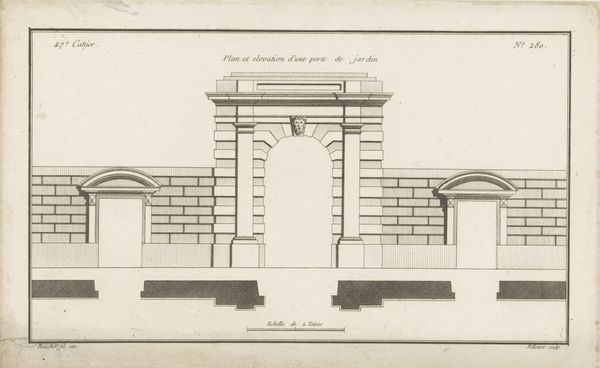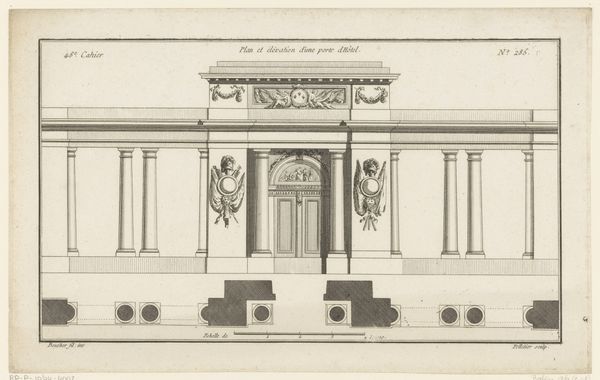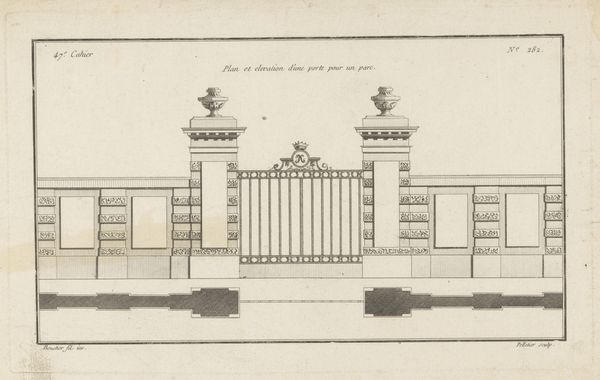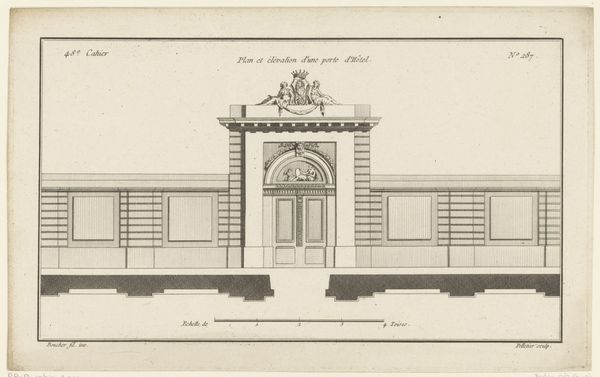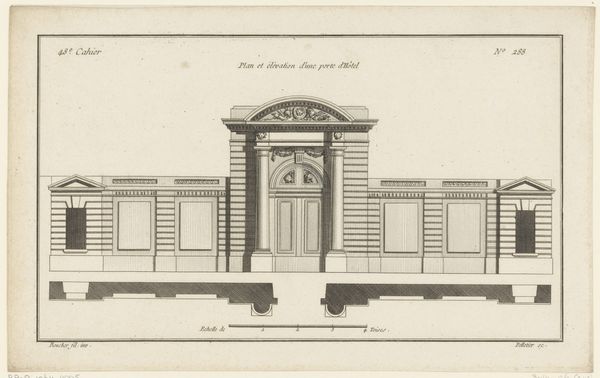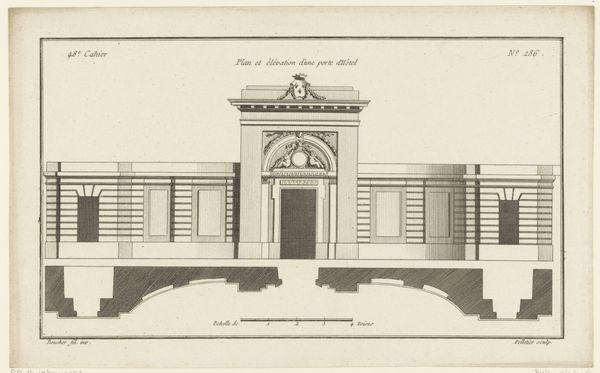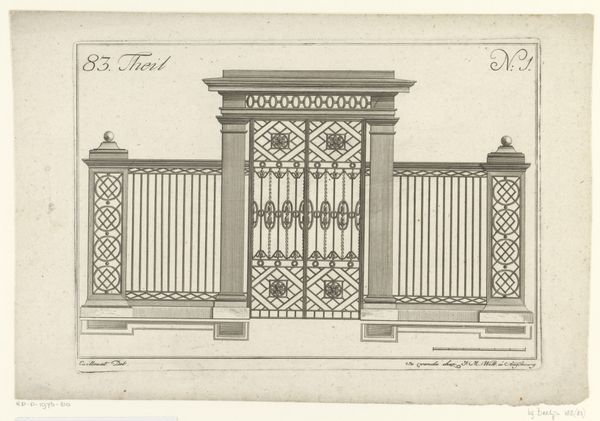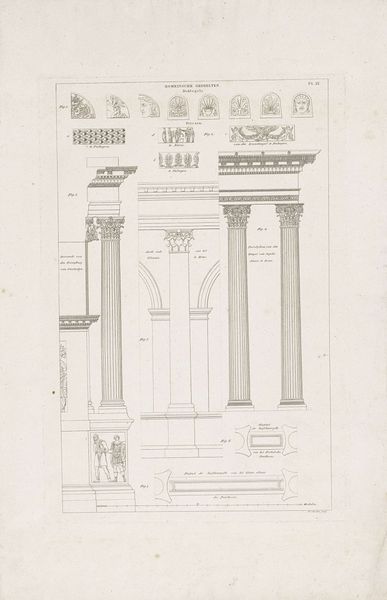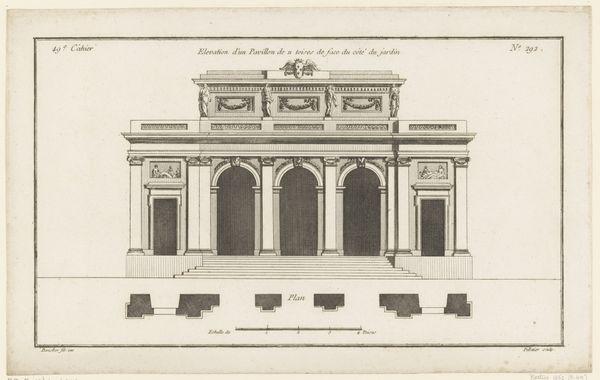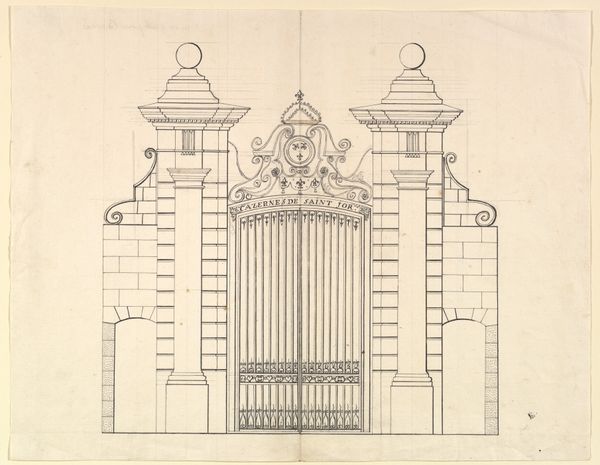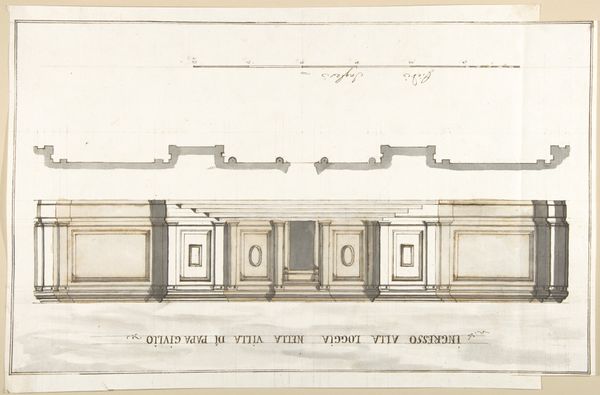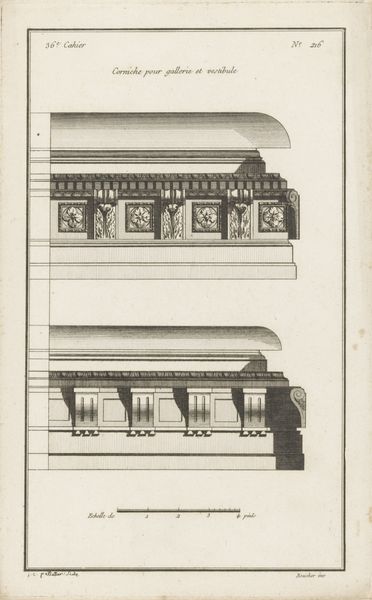
drawing, paper, ink, engraving, architecture
#
drawing
#
neoclacissism
#
ink paper printed
#
paper
#
ink
#
engraving
#
architecture
Dimensions: height 205 mm, width 333 mm
Copyright: Rijks Museum: Open Domain
Curator: Welcome. We're standing before Jean Pelletier's "Gate with Columns and Sphinxes," a drawing produced between 1772 and 1779. The artwork is an engraving made with ink on paper. Editor: It has this strange, almost unsettling calm. It reminds me of those silent movie title cards where you know something terrible is about to happen. The precision is lovely, but that sterile quality chills me. Curator: That's the neoclassical aesthetic at play, I suppose. We see the rigid symmetry, the idealised forms of the columns, and the classical motifs, here intended for a park entrance. This harkens back to the art and architecture of ancient Greece and Rome, reflecting a desire for order and reason, ideals particularly relevant in the period leading up to the French Revolution. Editor: Reason trying to hold back chaos, perhaps? I get the desire to make everything orderly—life’s messy enough as it is. Those sphinxes perched atop the pillars, they look like sleepy doormen more than fierce guardians. What are they even guarding? Good taste? Curator: Possibly the virtue of the landowners! Land ownership and power are frequently communicated through controlled nature, perfectly symmetrical park gates, and the status implied by mythological references. Note how Pelletier uses line work to achieve subtle tonal variations, emphasizing the architecture's structure and depth, while also reminding us it's meant as a plan. Editor: It feels cold and distant, like admiring something flawless behind glass. Still, the craftsmanship is undeniable, and the thought behind this is very impressive, even if its purpose is lost on me a little. Art created with this level of intentionality can almost be scary. Curator: Exactly. Pelletier, as an architect, wasn’t just designing a gate; he was envisioning and solidifying social and political boundaries of his time. It also serves to remind us of our place within historical forces of power. Editor: Which means, sometimes, the most powerful statements come in the neatest, most meticulously drawn packages. Maybe that controlled tension is what grabs me.
Comments
No comments
Be the first to comment and join the conversation on the ultimate creative platform.
